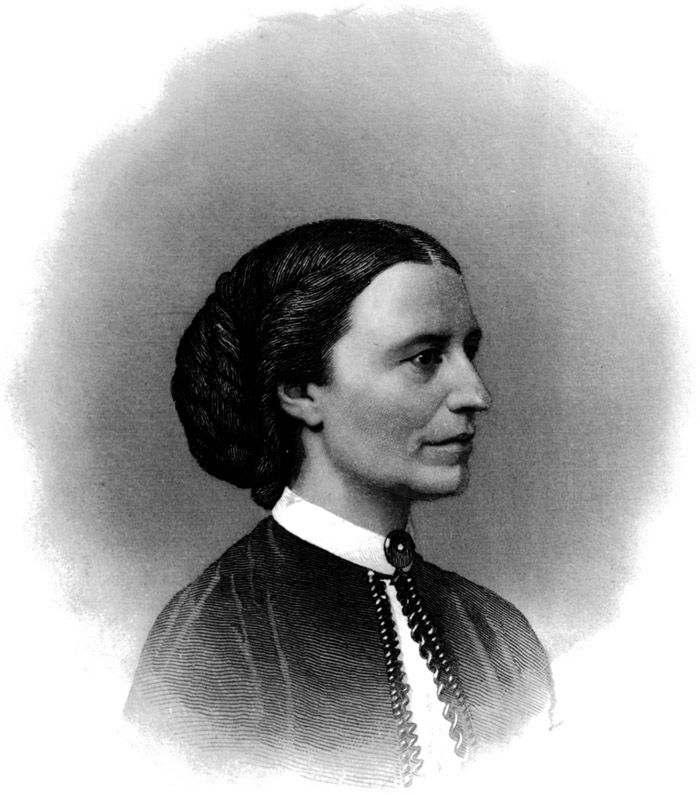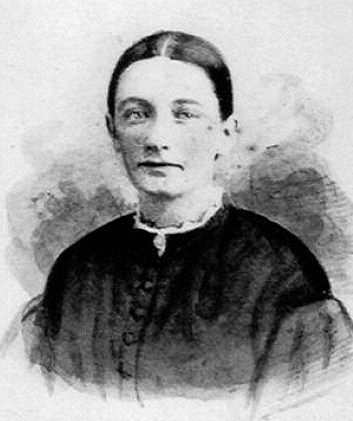The US Civil War (1861-1865) changed America in many ways. With many men fighting in the war, one such change was the role of women in society. Here, Kaiya Rai considers the role of women in the Confederate States, including a look at feminine ideals at the time, Belle Boyd, and Mary Chestnut.
Mary Chestnut, author a well-known civil war diary.
Women’s lives in the Confederacy were dramatically changed right from the breakout of war in April 1861. The very notion of womanhood underwent a transformation, as men were called up to fight in the army, and women from the upper-class were forced to look after slaves, women from the middle-class were forced to flee their homes and seek refuge, and women of the lower-class and widows gained social standing as a result. The idea of women having to takeover on the home front during a war is not a new one, but in the case of the American Civil War, this was an entirely new concept. Furthermore, women held no previous social standing. There was no growing suffrage movement as there was in World War One (WWI), it was the first time such an event had occurred, in contrast to World War Two (when many remembered WWI), and women from the upper reaches of society, did not generally have significant difficulties in their lives.
Much of the information gained about women in the Confederacy, and their changing identities, has come from the diaries that the majority of upper-class women wrote in. They provided a new way of self-discovery, as such writing required self-description as a result of self-understanding. Even when women began writing letters to officers, and even Jefferson Davis, it meant claiming a public voice, and so was incompatible with their definition and understanding of themselves as ‘women’.
Feminine ideals
The fragility of feminine ideals existing in the antebellum period appears to have served the women well, as it seems that ‘feminine weakness served as the foundation of female strength’ (Drew Gilpin Faust, Mothers of Invention: Women of the Slaveholding South in the American Civil War) in this case. Many women did what they could to play their part in the war, albeit covertly sometimes, as it wasn’t seen as being ‘feminine.’ Belle Boyd shooting the Union soldier entering her house is a key example of this; escaping punishment by claiming feminine fragility and fear was fundamental to the patriarchal nature of war. The hoop skirts that many upper-class women wore were used to hide jewelry, as they had no fear of being searched as women. This lack of threat is displayed in a Union soldier’s comment that ‘if she was a man I would whip her.’ The Nancy Hart regiment in La Grange, Georgia displayed a similar idea. When a Union regiment approached the town, the women-only regiment refused to back down, invited the soldiers in for tea and thus evaded the capture of the town! Elite women, in particular, hated the occupation of Confederate towns by Union soldiers, and were noted to have stepped in gutters to avoid passing Union soldiers on the pavement, and even wore thick veils to avoid eye contact with the officers! Students at a girl’s school in Georgia were recorded as emptying their chamber pots out of the windows onto soldiers’ heads, and Flag Officer Farragut was also subjected to this, in New Orleans. This hatred of the officers fuelled many women into action; despite their view of femininity, many wanted to play their part in forming a new nation and playing patriotic games against the country they believed had oppressed their ideals for so long.
However, their feminine helplessness has also been seen, to a large extent, to have been perpetrated by the women themselves. One of the first requirements for women in the Confederacy was as nurses and teachers, seen as traditionally female roles today, ironically! Yet, upon this call for help, many were writing to their husbands asking them to be forbidden to go. One woman even started addressing letters to her husband as ‘dear papa’ and ending them from your ‘daughter.’ Here, it seems that the patriarchy, whilst perhaps initiated by men, seems to have been upheld and continued by women. As McCurry noted that “no one, apparently, believed in women’s non-partisanship as fervently as the women themselves.” The need for protection was a big issue when men were called up to fight, and many made it a condition of them joining the war effort; they would do so, if the state could offer support for their families.
Belle Boyd’s Role as a Spy
Belle Boyd, also known as ‘the Siren of the Shenandoah,’ was one woman who played a particularly noteworthy role for the Confederacy. A die-hard secessionist, she spied for the Confederacy during the Civil War and was able to use her role as an upper class ‘lady’ to cover her actions, and claim ignorance when needed. When she and her mother denied entry to some Union officers wanting to raise a Union flag over their house, and when one assaulted her mother as a result, Belle shot and killed the soldier, and became infamous as a result. Despite being a spy for the majority of the Civil War, the usefulness of her intelligence work is not nearly as significant as the symbolism of her doing the work itself. She informed General Jackson of the Union intentions to set fire to the bridges in Front Royal (Virginia) as they retreated, and also reported on Union action in the Shenandoah - these are considered by most as the only outcomes of her intelligence work to have had major effect. However, the uncertainty of women’s roles, especially upper-class women’s roles during the Civil War was hugely compounded by Boyd’s actions, and perhaps it can be argued that she represented an icon for the helpless Confederate woman. Their femininity was, to an extent, reliant on the view that women were husbands’ wives, not individuals in their own right. Boyd used this fragile need for women to her advantage, and many stories of her outrageous flirtations circled among Union and confederate officers alike. These, however, played an important role as Boyd identified in one diary entry, "I am indebted for some very remarkable effusions, some withered flowers, and last, but not least, for a great deal of very important information.” The notion of womanhood as dependency on a man, and the objection, to some part, of women, that men perpetrated by bringing flowers and ‘remarkable effusion,’ actually allowed Boyd to gain all the information she needed to effectively spy on the Union for her cause.
Belle Boyd, a Confederate civil war spy.
Mary Chestnut as the more common female experience
Mary Chestnut conversely played the role of the conventional, helpless Confederate woman abandoned by her husband, but she held real devastation in this, and truly felt lost. Many women in the Confederacy had similar experiences to Chestnut, as they were left with a plantation and possibly hundreds of slaves to manage. There was also the constant fear of servile insurrection, aggravated by abolitionist John Brown’s raid in 1859 in which he wanted to start an armed slave revolt. Chestnut was the embodiment of women’s beliefs that, as Faust identifies, the feeling of ‘a new sense of God’s distance and disengagement combined with a distrust of the men on whom they had so long relied,’ and as such, the necessity of war that forced Confederate women to behave in new ways, became the driving force behind the changing of their identities. The lives of the confederate women, not having undergone the innovations of society that were occurring in the north, had been so focused on marriage and child-bearing, with their identities so tied up with visions of themselves as wives and mothers, that when war overturned these norms, it meant that their fundamental self-definition was altered. Moreover, their emotional relations and experiences were so fixed on privacies of heterosexual love that the countless examples of female homosexuality recorded in diaries, were not seen as anything other than close female friendship, probably in part because the identity of a woman was so ingrained as part of a larger patriarchal sphere.
Related to this is the renewed view of the identities of widows during the war. As a result of huge casualties, with 260,000 Confederate deaths at the end of the war, many women became widows, and this notion became romanticized as they were seen as having ‘loved and suffered’. Widows were seen as the settlers of ‘the rejuvenating club’ of women who became self-confident in themselves and eligible for a state pension of $30 per year, on certain conditions. This brought with it a sense of independence for many women, as they no longer had the choice of relying on a husband, and now owned money themselves, an opportunity which most would not have previously had. Widows therefore became essential for women all over the Confederacy, in questioning the very nature of being a woman, because women actively seeking romance redefined marriage conventions. The stereotype of the faithful, heartbroken wife, and therefore the assessment that women only lived for their husbands, was deconstructed, as they showed that they would continue to live their life even without a husband. To court and remarry was to assert a claim to happiness, preceding the self-abnegation and altruism expected from a woman.
To conclude
It can be seen that, as Faust argues, necessity may have been the ‘mother of invention’ for women in the Confederacy during the Civil War, as the romantic notions of war and patriotism had been replaced with a selfishness due to a need to survive. The women themselves could have also been the ‘mothers of invention’ themselves, though, and the women’s property law of 1860, embodied a new ‘vision of masculine irresponsibility’ (Lebsock), perhaps consequential of the new gender ideology introduced as a result of the Civil War.
What do you think about the role of women in the Confederacy during the US Civil War?

















